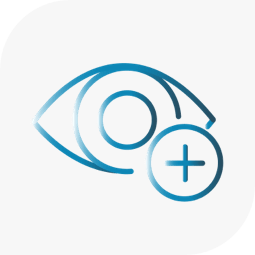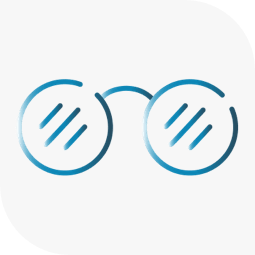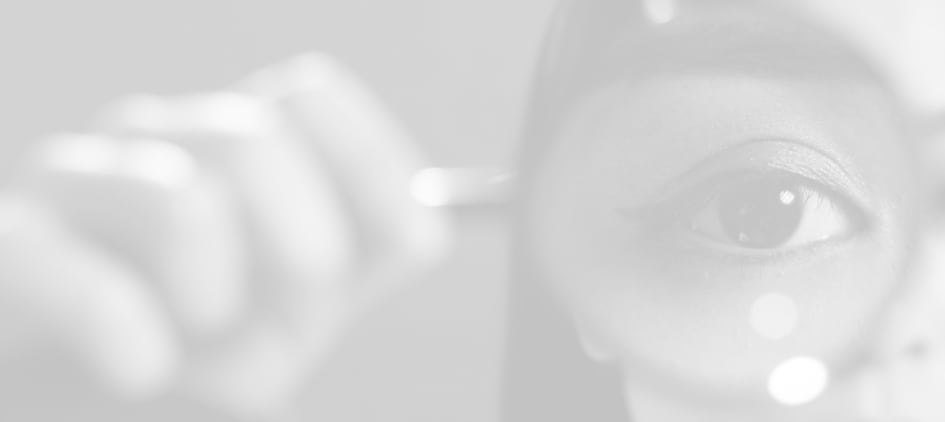While some of us may be excited at the prospect of shopping for new glasses, for others, getting an eye exam and new glasses may seem like a hassle. But no matter which camp you fall in, regular comprehensive eye exams are not just important for keeping your prescription up-to-date. Eye exams go a long way in protecting your eye health and overall well-being.
According to the Canadian Association of Optometrists, prescriptions for eyewear should be valid for no longer than 2 years. Our eyes change as we age, and comprehensive eye exams can identify issues that require intervention.
Understanding Glasses Prescriptions
According to a position statement published by the Canadian Association of Optometrists in 2016, expiry dates for prescription eyewear should not extend for more than 2 years. This is because our eyes change over time. For example, as children grow, so do their eyes. If a child has myopia (nearsightedness), their prescription may increase as their eyes grow. Due to the more rapid changes in prescriptions seen in children, seniors, and adults with diabetes, at our clinics, prescriptions are only valid for 1 year after the date of issue.
How to Read Your Prescription
When you receive your prescription for eyewear, there will be abbreviations and numbers you may not be familiar with. Here’s a little guidance on how to understand them.
The eyes are indicated with Latin terms and abbreviations:
- OD: “Oculus dexter” or right eye
- OS: “Oculus sinister” for left eye
- OU: “Oculus uterque” or both eyes (you may not always see this on your prescription)
The spherical correction number, or SPH indicates lens power for nearsightedness or farsightedness. Lens power is measured in dioptres.
- A negative (-) number indicates a prescription power for nearsightedness.
- A positive (+) number indicates a prescription power for farsightedness.
You may see a second number. This is called the cylindrical correction and will be present on your prescription if you have astigmatism.
Other information included in your prescription may include a different prescription for near vision and prism dioptres.
Why Regular Eye Exams Are Important

Comprehensive eye exams go beyond prescriptions and eye health—they’re important for your overall well-being too.
Eye diseases often don’t show noticeable symptoms until they’ve progressed to a point where treatment is challenging or even impossible. An eye exam can identify conditions like glaucoma, retinal detachment, and macular degeneration before that happens. Eye exams can even detect signs of underlying conditions like hypertension, diabetes, and brain tumours.
By spotting signs of these diseases, an optometrist can refer you to an appropriate healthcare provider to further investigate the condition and promptly intervene.
Eye Exam Frequency
The Canadian Association of Optometrists recommends the following eye exam frequencies based on age and health status:
- Babies should receive their first eye exam between the ages of 6 and 9 months
- Young children should receive at least one eye exam between the ages of 2 and 5 years
- Youth 19 and under should get an eye exam once a year
- Adults ages 20 to 64 should get an eye exam every other year
- Adults with diabetes should get an eye exam every year
- Older adults aged 65 and over should get an eye exam every year
Based on your individual eye health needs and medical history, your optometrist may recommend more frequent eye exams.
Do You Need a New Prescription?
Eyes change over time. While the length of your eyes typically stops growing in your early 20s, your eyes and vision can still change throughout your life.
Babies’ eyes undergo a lot of changes. When they’re born, they start out with blurry vision and nearsightedness. But by 3 months of age, babies should be able to follow things as they move with their eyes. Colour vision and depth perception are developed by the age of 5 months. A baby should receive their first eye exam between 6 and 9 months of age.
Our eyes also undergo many changes after age 40. This is when presbyopia tends to develop. Presbyopia causes things to be more difficult to see up close, and is what causes some people to need reading glasses. It’s a natural consequence of aging because our eyes lose flexibility as they age.
Older adults are also at increased risk of conditions like dry eye, cataracts, and macular degeneration.
Signs You Need a New Prescription
Think you may need an updated prescription? Here are some signs to look out for:
- Fuzzy vision: If things are starting to look blurry, you may need a new prescription. Your nearsightedness may have progressed, or you may be in need of reading glasses.
- Eye strain and headaches: Squinting, straining, and headaches are other signs that your prescription needs an update. These symptoms may also indicate that your glasses don’t fit properly.
- Damaged eyeglasses: If your glasses have scratches on them, it’s time for new glasses. Lens coatings can also get damaged.
- Lifestyle changes: Different types of glasses can help with different lifestyles. For example, people who do a lot of work in front of screens may benefit from anti-reflective lenses.
- Style refresh: Trends change over time. If you’re a fashion-conscious eyewear connoisseur, you may be interested in trying on a new style.
Keep Your Eye Health in Check
Glasses prescriptions typically expire within 1-2 years, and eye exams are recommended for most adults ages 20 to 64 every 2 years. So, it makes sense to visit your optometrist at least once every other year to get your prescription updated and your eye health assessed. Doing so can help spot problems at an earlier and more treatable stage.
Collingwood Optometry & Cwood Eyecare offer eye exams for children and adults. We also have a wide variety of frames and lenses available, and we even offer sport, safety, and specialty eyewear. Collingwood Optometry has been proudly serving the community for 55 years. More recently, we’ve expanded our practice, establishing Cwood Eyecare on Hurontario St. Contact us to book an appointment at a convenient location near you!























